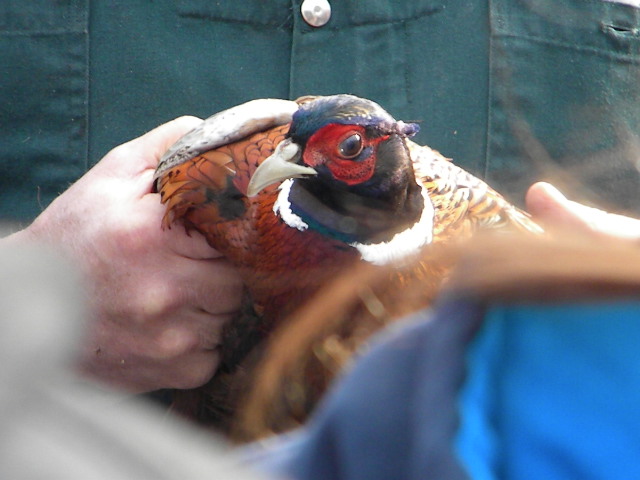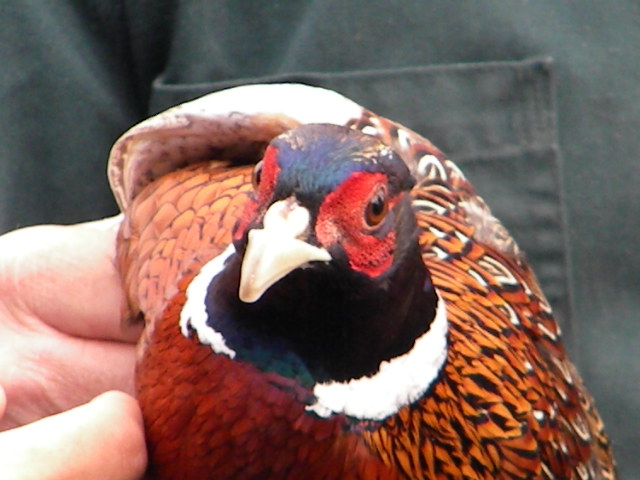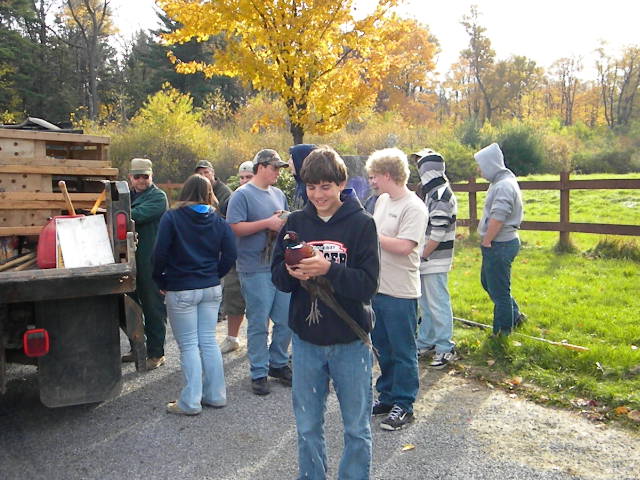PA GAME COMMISSION PHEASANT PROGRAM
October 23, 2009

Today I had the pleasure of joining some Brockway High School Junior and Senior students and their teacher as the Pa. Game Commission held a program to teach the group about pheasants and the program the game commission runs to raise and release pheasants for hunting.
The highlight of the event was allowing the students to hold and actually release some of the 40 birds that were released. The emotions ran from some who at first looked scared to death of the birds to some who were smiling and laughing the whole time the birds were being released.Some of the birds looked happy as they flew away and others must have decided to try and collide with some of the students as they flew directly at them before ascending into the fall sky...

Here's some of the interesting facts we were given about the pheasants and the PGC stocking program..
...Pheasants are not native to Pennsylvania or the USA, they were introduced from China in 1881
...Pheasants are the main target for many types of predators and they need better than average habitat to prosper. Thus not alot of pheasants live in Pa anymore.
...Thus the need for the PGC to raise and stock them for the sport of hunting.
""The primary goal of the Pennsylvania Game Commission's Pheasant Propagation Program is to provide a quality game bird for regulated hunting opportunities. Initially, the purpose of pheasant stocking was to help establish self-sustaining populations. However, numerous studies have shown that although a few birds may survive long enough to reproduce, viable wild populations are not produced.""
...They breed in March and the hens start laying eggs from April to June
... The eggs incubate for 24-28 days before hatching.
...They mature in approximately 16 weeks
... The adults weigh between 4.5 to 5.5 pounds with the males being larger than the hens

...The game commission has 3 farms that raise about 200,000 pheasants to be released each year in the state. We had 40 today to release.
..The pheasants may travel up to two miles after being released trying to find a new home that provides food and protection from predators.
... A Male's age and health can be determined by his tail feathers, the longer they are the older and better conditions the bird is in, much like antlers on a deer and the feathers grow very rapidly when young.
...Unlike today's female humans the female pheasant is fairly plain in color unlike the bold colorings of the male as if he had on all the make-up ...


I would like to thank the PGC for allowing me to attend today's event and to the students from my hometown of Brockway for allowing the photos...
HERE ARE SOME PHOTOS FOR YOUR ENJOYMENT
just click on image to enlarge it































